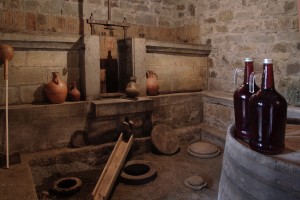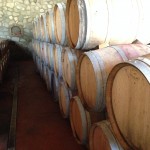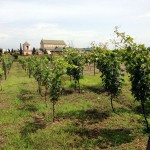 Винодельня и винный погреб в грузинском языке обозначаются одним названием — Марани. Однако, марани — не только место, где вино хранится. Марани является местом для выдавливания винограда, брожения виноградного сока и, конечно, для хранения вин. Самое интересное то, что марани также служил местом для религиозных церемоний. В языческие времена грузины поклонялись древу виноградной лозы и напитку из него, они сохранили некоторые из этих церемоний и традиции до наших дней. Сегодня маринад является безраздельной частью грузинской этнографии. У большинства современных грузинских жителей все еще есть функционирующие марани, как правило, расположенные близко к их виноградникам.
Винодельня и винный погреб в грузинском языке обозначаются одним названием — Марани. Однако, марани — не только место, где вино хранится. Марани является местом для выдавливания винограда, брожения виноградного сока и, конечно, для хранения вин. Самое интересное то, что марани также служил местом для религиозных церемоний. В языческие времена грузины поклонялись древу виноградной лозы и напитку из него, они сохранили некоторые из этих церемоний и традиции до наших дней. Сегодня маринад является безраздельной частью грузинской этнографии. У большинства современных грузинских жителей все еще есть функционирующие марани, как правило, расположенные близко к их виноградникам.
В грузинской этнографии сохранились 2 основных типа марани: закрытые и открытые. Закрытый Марани встречается в основном в Восточной Грузии, особенно в Кахетии. Здесь квеври погребенные в почве под крышей здания, бочки или цистерны, также находятся внутри здания под названием марани. Западная Грузия в основном известна открытым типом марани. Здесь квеври также погребена в почве, но на открытом месте, как правило под деревом, близкой к зданию с винодельческих объектов и инструментов. Бочки и цистерны аналогично восточно-грузинских марани находятся внутри здания.








